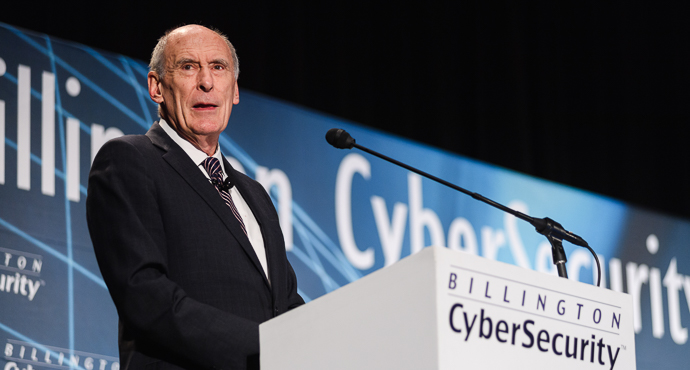
The view from the ODNI.
Director of National Intelligence Daniel Coats, delivering the opening keynote of the Billington CyberSecurity Summit, began by framing the cyber threat to critical infrastructure as the central security challenge the United States faces. His prescription for meeting that challenge is systematic and well-structured information-sharing.
Infrastructure is open to attack.
The proliferation of the Internet-of-things has vasty expanded the attack surface of an infrastructure that's increasingly connected and thoroughly pervaded by devices too often designed with security as an afterthought (if it's given any thought at all). He alluded to the expanding array of international threats, cyber threats prominently among them, and reviewed the familiar classes of threat actors, singling out, in approximate order of severity, the threat from Russia, China, Iran, and North Korea. DNI Coats's list of nation-state threats would be repeated by others throughout the conference; it's clearly the consensus rogues' gallery of the United States Government, and has been since the previous Administration. All four share to varying degrees the goal of eroding public trust. (China has a stronger interest in economic espionage; Russia and Iran have a fixed focus on attacking American legitimacy and prestige; North Korea is committed to its regime's survival and opportunistic mischief.)
A "cyber 911," a major attack on critical infrastructure, Coats takes to be a real possibility. Increasing connectivity is amplifying the consequences of any attack. Coats placed unusual emphasis on the danger of attacks aimed at corrupting data. Such emphasis is consistent with his overall emphasis on the adversaries' goal of eroding trust.
The Intelligence Community and information sharing.
The DNI assured the audience that the Intelligence Community is doing all it can to deliver actionable intelligence to its partners. But he argued that such intelligence is actionable only when it is collaborative and understood in the context of vulnerabilities. Thus, he said, improved information sharing among government and the private sector is an imperative.
Coats thinks such sharing has become needlessly complex. He called for a common approach and a common vocabulary to facilitate collaboration, and he added that the ODNI's model for moving toward these is no secret. A common, structured, hierarchical approach will help all parties, he said.
DNI Coats closed by inviting the private sector to join in fostering collaborative information sharing and security by design. The Intelligence Community is limited in what it can say publicly, but he wished to assure everyone that the IC is working professionally, objectively, and on good close terms with the Administration.